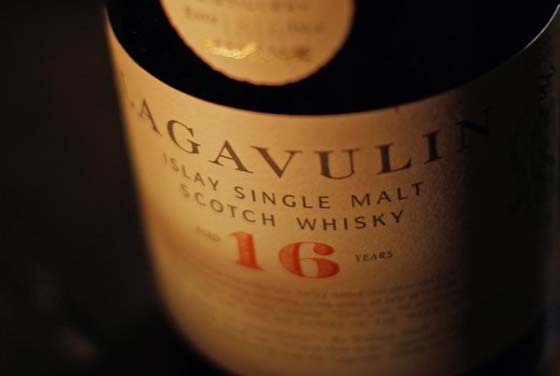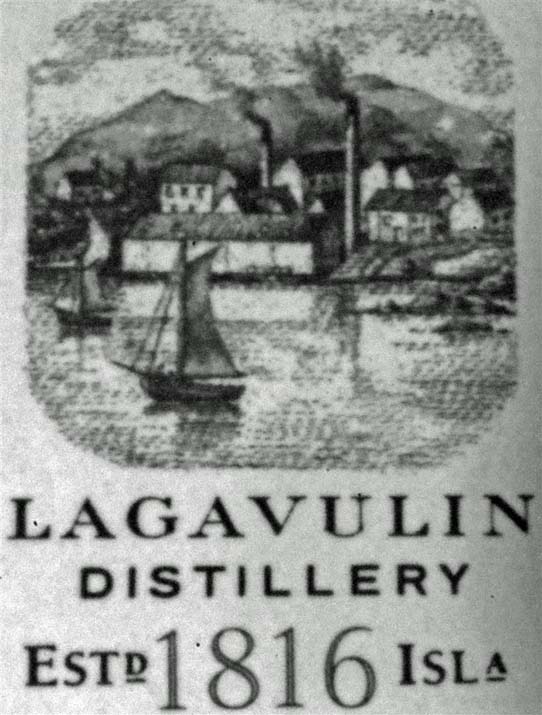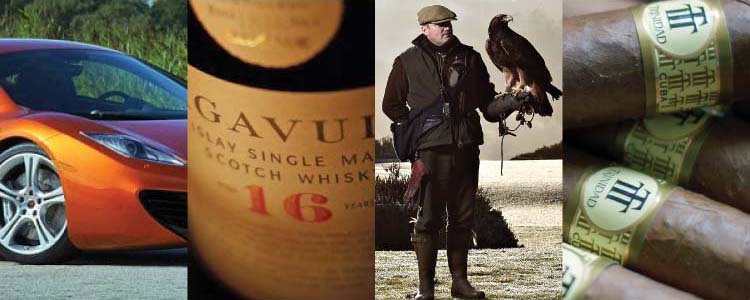Rupert Mackintosh
Reviewing the Lagavulin 16 year old is like reviewing Steve McQueen on a motorbike. Why? Well, it’s iconic. Even those who don’t understand motorbikes (myself included) can instantly picture the image and associate with the heydays of cinema and vintage cool.

It’s also so iconic that even those who don’t like whisky have heard of Lagavulin, due in no small part to the very successful and smart marketing of the brand. It is also due to the fact it’s a tough, strong, and powerful, dram – some would argue like the character of McQueen.
Timeless? Check. Rugged? Check. Cult following? Check. Expensive? Check. So why review this? Surely this has to be *the* definitive product coming out of Islay, or possibly the malt industry in general, for the last decade. Aren’t we going over old ground here?
At County Deer we avoid getting caught up in the passing trends and fads of the moment. We recognise that quality shouldn’t be defined or recognised by the mass media, and true quality, in craft and workmanship, should be given its due regardless of the ‘buzz’ going on in the trendy places. So sometimes we hit on little known start-ups, just finding their way into an industry and showing massive potential, and other times we look at proverbial giants, who, frankly, will survive without any endorsement or acknowledgement. You can guess which category this malt falls in to . . .
The premium, near superstar following this malt has built up has also generated a premium price point. Granted, the entry level Lagavulin is a 16 year old as apposed to the more commonly found 12, and not quite at the coveted 18 year statement, but it’s still a bit pricier than most by about £10 - £15 depending on retailer and situation. In many ways a likeness can be drawn to the Cohiba brand of cigars and the extra fermentation and consequent higher price point.
Lagavulin itself means ‘the mill in the valley’, when translated from the Gaelic of Laggan Mhouillan, and is noted for sitting on the edge of the bay not far from the Dunyveg Castle ruins on Islay.

Interestingly, if given as a gift, Lagavulin doesn’t make a huge splash. It’s a fairly understated physical package, coming in a charcoal effect cardboard sleeve complete with little etching of the distillery itself. The outer box features the rearing horse crest of which dates back to the original owners of the distillery. Smartly turned out but not nearly as flashy as some packages. Equally the label itself seems caught between the old fashioned styling of the 1980s and the ‘new wave’ that brands like Bruichladdich have released that makes malts more appealing to the younger generations. The actual shape of the bottle is distinctive though, which makes it easy to spot across a crowded bar.
So where this wee dram really excels is the aromas and taste. Everyone who touches Lagavulin will be doing so for the peat of which makes it such a classic dram. The flavour itself is actually also enhanced greatly by the local water supply, of which following a lengthy legal challenge, the distillery now has exclusive rights over the water channels that feeds the large distillery stills. For those of you yet to sample the peaty wonders of this whisky, by way of illustration, it is estimated that the barley used in the dram is exposed to 20 times the levels of peat smoke as typical malts from Speyside, for example.
In the glass the 16 year old is a rich, dark yellow hue, reminiscing barley itself in twilight; nosing the glass reveals an explosion of peat, of which really fills the air and lingers. Wet, fresh seaweed and freshly washed table vegetables follow the initial charge of soot, before finally giving way to a distant caramel. First sips of the liquid provide a strong yet surprisingly ornate and delicate introduction, before the kick really hits the back of the mouth! As with the vast majority of my malts I take Lagavulin with a splash of mineral water, but you can still expect a bit of a mule kick unless you are really watering it down. But rather than kick you away, it actually grabs you and excites you – don’t confuse the kick with one of rejection! The depth and general body to the malt remains even with water, and it has a solidity of which lighter offerings from Scotland tend to omit. Once swallowed the taste remains strong for a while, and vapours of sea spray and that infamous peat stay with you for a while – or at least until the next mouthful! Many declare that Lagavulin is crying out for a good cigar to go with it. I must confess I prefer to smoke first and then advance to Lagavulin, as it can easily follow a lighter cognac or wine without too much trouble. Ramon Allones, Cohiba, Partagas, San Cristobal de la Habana or Cuaba would all be valid choices for this end of the evening but mixing the two may result in the intricate flavours being lost. If Peat and Smoke are your two goals for an evening, I would look for something a little simpler like Laphroaig to carry you on the peaty journey while puffing, as you do run the risk of overlooking things here.
For me, Lagavulin is also one of those memorable drams; it takes me back to sitting on a baroque balcony in Passy, the 16th Arrondissement of Paris, watching the sun set across the Seine and drinking in the end of a long day. With such a distinctive profile, every time I raise the first glass of the evening to my nostrils, I’m back on the balcony. See if you remember your first glass of heavenly peat!
(If you'd like to order a bottle of Lagavulin or other Whisky, simply click through to 'The Whisky Exchange' at the top of the page to place an order).



















